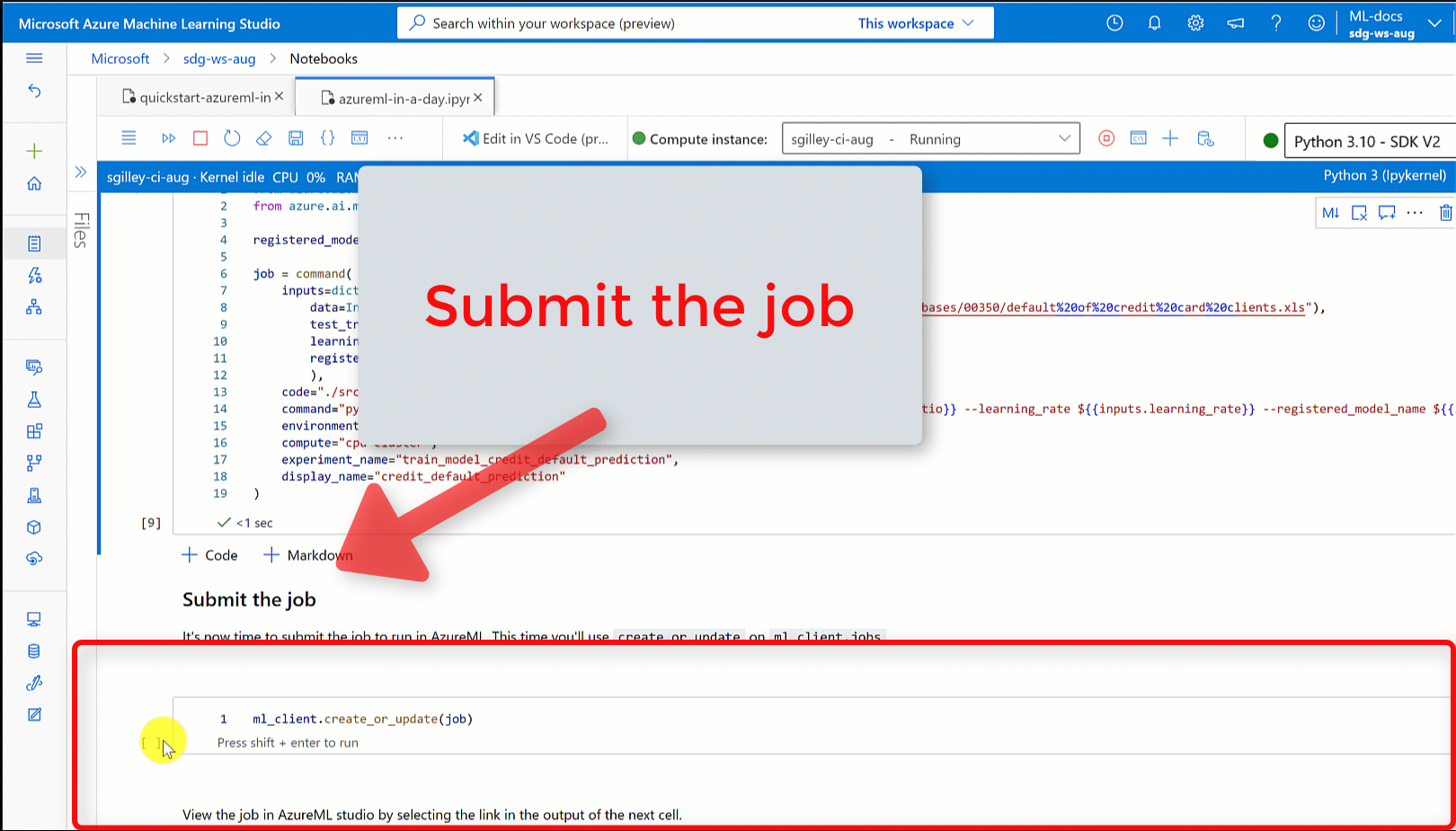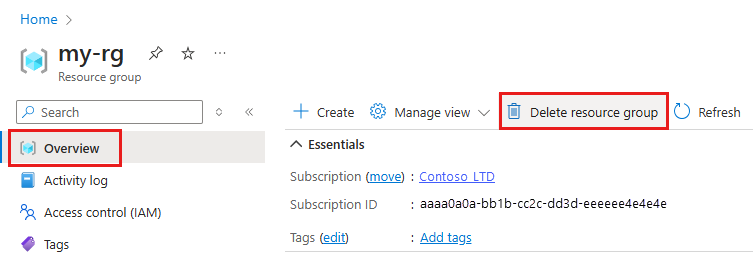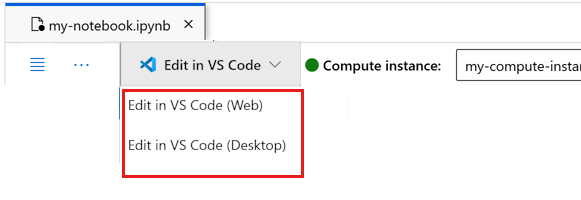Tutorial: Train a model in Azure Machine Learning
APPLIES TO:  Python SDK azure-ai-ml v2 (current)
Python SDK azure-ai-ml v2 (current)
Learn how a data scientist uses Azure Machine Learning to train a model. In this example, you use a credit card dataset to understand how to use Azure Machine Learning for a classification problem. The goal is to predict if a customer has a high likelihood of defaulting on a credit card payment. The training script handles the data preparation. The script then trains and registers a model.
This tutorial takes you through steps to submit a cloud-based training job (command job).
- Get a handle to your Azure Machine Learning workspace
- Create your compute resource and job environment
- Create your training script
- Create and run your command job to run the training script on the compute resource
- View the output of your training script
- Deploy the newly-trained model as an endpoint
- Call the Azure Machine Learning endpoint for inferencing
If you would like to learn more about how to load your data into Azure, see Tutorial: Upload, access, and explore your data in Azure Machine Learning.
This video shows how to get started in Azure Machine Learning studio so that you can follow the steps in the tutorial. The video shows how to create a notebook, create a compute instance, and clone the notebook. The steps are also described in the following sections.
Prerequisites
-
To use Azure Machine Learning, you need a workspace. If you don't have one, complete Create resources you need to get started to create a workspace and learn more about using it.
Important
If your Azure Machine Learning workspace is configured with a managed virtual network, you might need to add outbound rules to allow access to the public Python package repositories. For more information, see Scenario: Access public machine learning packages.
-
Sign in to the studio and select your workspace if it's not already open.
-
Open or create a notebook in your workspace:
- If you want to copy and paste code into cells, create a new notebook.
- Or, open tutorials/get-started-notebooks/train-model.ipynb from the Samples section of studio. Then select Clone to add the notebook to your Files. To find sample notebooks, see Learn from sample notebooks.
Set your kernel and open in Visual Studio Code (VS Code)
On the top bar above your opened notebook, create a compute instance if you don't already have one.
If the compute instance is stopped, select Start compute and wait until it's running.
Wait until the compute instance is running. Then make sure that the kernel, found on the top right, is
Python 3.10 - SDK v2. If not, use the dropdown list to select this kernel.If you don't see this kernel, verify that your compute instance is running. If it is, select the Refresh button on the top right of the notebook.
If you see a banner that says you need to be authenticated, select Authenticate.
You can run the notebook here, or open it in VS Code for a full integrated development environment (IDE) with the power of Azure Machine Learning resources. Select Open in VS Code, then select either the web or desktop option. When launched this way, VS Code is attached to your compute instance, the kernel, and the workspace file system.
Important
The rest of this tutorial contains cells of the tutorial notebook. Copy and paste them into your new notebook, or switch to the notebook now if you cloned it.
Use a command job to train a model in Azure Machine Learning
To train a model, you need to submit a job. Azure Machine Learning offers several different types of jobs to train models. Users can select their method of training based on complexity of the model, data size, and training speed requirements. In this tutorial, you learn how to submit a command job to run a training script.
A command job is a function that allows you to submit a custom training script to train your model. This job can also be defined as a custom training job. A command job in Azure Machine Learning is a type of job that runs a script or command in a specified environment. You can use command jobs to train models, process data, or any other custom code you want to execute in the cloud.
This tutorial focuses on using a command job to create a custom training job that you use to train a model. Any custom training job requires the following items:
- environment
- data
- command job
- training script
This tutorial provides these items for the example: creating a classifier to predict customers who have a high likelihood of defaulting on credit card payments.
Create handle to workspace
Before you dive in the code, you need a way to reference your workspace. Create ml_client for a handle to the workspace. Then use ml_client to manage resources and jobs.
In the next cell, enter your subscription ID, resource group name, and workspace name. To find these values:
- In the upper right Azure Machine Learning studio toolbar, select your workspace name.
- Copy the value for workspace, resource group, and subscription ID into the code. You need to copy one value, close the area and paste, then come back for the next one.
from azure.ai.ml import MLClient
from azure.identity import DefaultAzureCredential
# authenticate
credential = DefaultAzureCredential()
SUBSCRIPTION="<SUBSCRIPTION_ID>"
RESOURCE_GROUP="<RESOURCE_GROUP>"
WS_NAME="<AML_WORKSPACE_NAME>"
# Get a handle to the workspace
ml_client = MLClient(
credential=credential,
subscription_id=SUBSCRIPTION,
resource_group_name=RESOURCE_GROUP,
workspace_name=WS_NAME,
)
Note
Creating MLClient does not connect to the workspace. The client initialization is lazy. It waits for the first time it needs to make a call, which happens in the next code cell.
# Verify that the handle works correctly.
# If you ge an error here, modify your SUBSCRIPTION, RESOURCE_GROUP, and WS_NAME in the previous cell.
ws = ml_client.workspaces.get(WS_NAME)
print(ws.location,":", ws.resource_group)
Create a job environment
To run your Azure Machine Learning job on your compute resource, you need an environment. An environment lists the software runtime and libraries that you want installed on the compute where do the training. It's similar to the python environment on your local machine. For more information, see What are Azure Machine Learning environments?
Azure Machine Learning provides many curated or ready-made environments that are useful for common training and inference scenarios.
In this example, you create a custom conda environment for your jobs, using a conda yaml file.
First, create a directory to store the file in.
import os
dependencies_dir = "./dependencies"
os.makedirs(dependencies_dir, exist_ok=True)
The next cell uses IPython magic to write the conda file into the directory you created.
%%writefile {dependencies_dir}/conda.yaml
name: model-env
channels:
- conda-forge
dependencies:
- python=3.8
- numpy=1.21.2
- pip=21.2.4
- scikit-learn=1.0.2
- scipy=1.7.1
- pandas>=1.1,<1.2
- pip:
- inference-schema[numpy-support]==1.3.0
- mlflow==2.8.0
- mlflow-skinny==2.8.0
- azureml-mlflow==1.51.0
- psutil>=5.8,<5.9
- tqdm>=4.59,<4.60
- ipykernel~=6.0
- matplotlib
The specification contains some usual packages that you use in your job, such as numpy and pip.
Reference this yaml file to create and register this custom environment in your workspace:
from azure.ai.ml.entities import Environment
custom_env_name = "aml-scikit-learn"
custom_job_env = Environment(
name=custom_env_name,
description="Custom environment for Credit Card Defaults job",
tags={"scikit-learn": "1.0.2"},
conda_file=os.path.join(dependencies_dir, "conda.yaml"),
image="mcr.microsoft.com/azureml/openmpi4.1.0-ubuntu20.04:latest",
)
custom_job_env = ml_client.environments.create_or_update(custom_job_env)
print(
f"Environment with name {custom_job_env.name} is registered to workspace, the environment version is {custom_job_env.version}"
)
Configure a training job using the command function
You create an Azure Machine Learning command job to train a model for credit default prediction. The command job runs a training script in a specified environment on a specified compute resource. You already created the environment and the compute cluster. Next, create the training script. In this case, you're training the dataset to produce a classifier using the GradientBoostingClassifier model.
The training script handles the data preparation, training, and registering of the trained model. The method train_test_split splits the dataset into test and training data. In this tutorial, you create a Python training script.
Command jobs can be run from CLI, Python SDK, or studio interface. In this tutorial, use the Azure Machine Learning Python SDK v2 to create and run the command job.
Create training script
Start by creating the training script: the main.py python file. First create a source folder for the script:
import os
train_src_dir = "./src"
os.makedirs(train_src_dir, exist_ok=True)
This script preprocesses the data, splitting it into test and train data. It then consumes the data to train a tree based model and return the output model.
MLFlow is used to log the parameters and metrics during this job. The MLFlow package allows you to track metrics and results for each model Azure trains. Use MLFlow to get the best model for your data. Then view the model's metrics on the Azure studio. For more information, see MLflow and Azure Machine Learning.
%%writefile {train_src_dir}/main.py
import os
import argparse
import pandas as pd
import mlflow
import mlflow.sklearn
from sklearn.ensemble import GradientBoostingClassifier
from sklearn.metrics import classification_report
from sklearn.model_selection import train_test_split
def main():
"""Main function of the script."""
# input and output arguments
parser = argparse.ArgumentParser()
parser.add_argument("--data", type=str, help="path to input data")
parser.add_argument("--test_train_ratio", type=float, required=False, default=0.25)
parser.add_argument("--n_estimators", required=False, default=100, type=int)
parser.add_argument("--learning_rate", required=False, default=0.1, type=float)
parser.add_argument("--registered_model_name", type=str, help="model name")
args = parser.parse_args()
# Start Logging
mlflow.start_run()
# enable autologging
mlflow.sklearn.autolog()
###################
#<prepare the data>
###################
print(" ".join(f"{k}={v}" for k, v in vars(args).items()))
print("input data:", args.data)
credit_df = pd.read_csv(args.data, header=1, index_col=0)
mlflow.log_metric("num_samples", credit_df.shape[0])
mlflow.log_metric("num_features", credit_df.shape[1] - 1)
#Split train and test datasets
train_df, test_df = train_test_split(
credit_df,
test_size=args.test_train_ratio,
)
####################
#</prepare the data>
####################
##################
#<train the model>
##################
# Extracting the label column
y_train = train_df.pop("default payment next month")
# convert the dataframe values to array
X_train = train_df.values
# Extracting the label column
y_test = test_df.pop("default payment next month")
# convert the dataframe values to array
X_test = test_df.values
print(f"Training with data of shape {X_train.shape}")
clf = GradientBoostingClassifier(
n_estimators=args.n_estimators, learning_rate=args.learning_rate
)
clf.fit(X_train, y_train)
y_pred = clf.predict(X_test)
print(classification_report(y_test, y_pred))
###################
#</train the model>
###################
##########################
#<save and register model>
##########################
# Registering the model to the workspace
print("Registering the model via MLFlow")
mlflow.sklearn.log_model(
sk_model=clf,
registered_model_name=args.registered_model_name,
artifact_path=args.registered_model_name,
)
# Saving the model to a file
mlflow.sklearn.save_model(
sk_model=clf,
path=os.path.join(args.registered_model_name, "trained_model"),
)
###########################
#</save and register model>
###########################
# Stop Logging
mlflow.end_run()
if __name__ == "__main__":
main()
In this script, after the model is trained, the model file is saved and registered to the workspace. Registering your model allows you to store and version your models in the Azure cloud, in your workspace. After you register a model, you can find all other registered model in one place in the Azure Studio called the model registry. The model registry helps you organize and keep track of your trained models.
Configure the command
Now that you have a script that can perform the classification task, use the general purpose command that can run command line actions. This command line action can be directly calling system commands or by running a script.
Create input variables to specify the input data, split ratio, learning rate and registered model name. The command script:
- Uses the environment created earlier. Use the
@latestnotation to indicate the latest version of the environment when the command is run. - Configures the command line action itself,
python main.pyin this case. You can access the inputs and outputs in the command by using${{ ... }}notation. - Since a compute resource wasn't specified, the script runs on a serverless compute cluster that is automatically created.
from azure.ai.ml import command
from azure.ai.ml import Input
registered_model_name = "credit_defaults_model"
job = command(
inputs=dict(
data=Input(
type="uri_file",
path="https://azuremlexamples.blob.core.windows.net/datasets/credit_card/default_of_credit_card_clients.csv",
),
test_train_ratio=0.2,
learning_rate=0.25,
registered_model_name=registered_model_name,
),
code="./src/", # location of source code
command="python main.py --data ${{inputs.data}} --test_train_ratio ${{inputs.test_train_ratio}} --learning_rate ${{inputs.learning_rate}} --registered_model_name ${{inputs.registered_model_name}}",
environment="aml-scikit-learn@latest",
display_name="credit_default_prediction",
)
Submit the job
Submit the job to run in Azure Machine Learning studio. This time, use create_or_update on ml_client. ml_client is a client class that allows you to connect to your Azure subscription using Python and interact with Azure Machine Learning services. ml_client allows you to submit your jobs using Python.
ml_client.create_or_update(job)
View job output and wait for job completion
To view the job in Azure Machine Learning studio, select the link in the output of the previous cell. The output of this job looks like this in the Azure Machine Learning studio. Explore the tabs for various details like metrics, outputs etc. After the job finishes, it registers a model in your workspace as a result of training.

Important
Wait until the status of the job is complete before you return to this notebook to continue. The job takes 2 to 3 minutes to run. It could take longer, up to 10 minutes, if the compute cluster has been scaled down to zero nodes and custom environment is still building.
When you run the cell, the notebook output shows a link to the job's details page on Machine Learning studio. Alternatively, you can also select Jobs on the left navigation menu.
A job is a grouping of many runs from a specified script or piece of code. Information for the run is stored under that job. The details page gives an overview of the job, the time it took to run, when it was created, and other information. The page also has tabs to other information about the job such as metrics, Outputs + logs, and code. Here are the tabs available in the job's details page:
- Overview: Basic information about the job, including its status, start and end times, and the type of job that was run
- Inputs: The data and code that were used as inputs for the job. This section can include datasets, scripts, environment configurations, and other resources that were used during training.
- Outputs + logs: Logs generated while the job was running. This tab helps troubleshooting if anything goes wrong with your training script or model creation.
- Metrics: Key performance metrics from your model such as training score, f1 score, and precision score.
Clean up resources
If you plan to continue now to other tutorials, skip to Related content.
Stop compute instance
If you're not going to use it now, stop the compute instance:
- In the studio, in the left navigation area, select Compute.
- In the top tabs, select Compute instances.
- Select the compute instance in the list.
- On the top toolbar, select Stop.
Delete all resources
Important
The resources that you created can be used as prerequisites to other Azure Machine Learning tutorials and how-to articles.
If you don't plan to use any of the resources that you created, delete them so you don't incur any charges:
In the Azure portal, in the search box, enter Resource groups and select it from the results.
From the list, select the resource group that you created.
In the Overview page, select Delete resource group.

Enter the resource group name. Then select Delete.
Related content
Learn about deploying a model:
This tutorial used an online data file. To learn more about other ways to access data, see Tutorial: Upload, access, and explore your data in Azure Machine Learning.
Automated ML is a supplemental tool to reduce the amount of time a data scientist spends finding a model that works best with their data. For more information, see What is automated machine learning.
If you would like more examples similar to this tutorial, see Learn from sample notebooks. These samples are available at the GitHub examples page. The examples include complete Python Notebooks that you can run code and learn to train a model. You can modify and run existing scripts from the samples, containing scenarios including classification, natural language processing, and anomaly detection.



